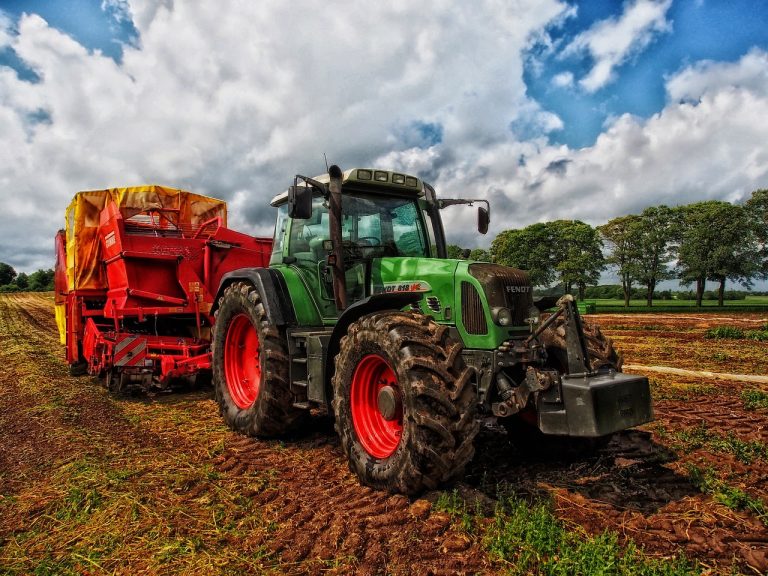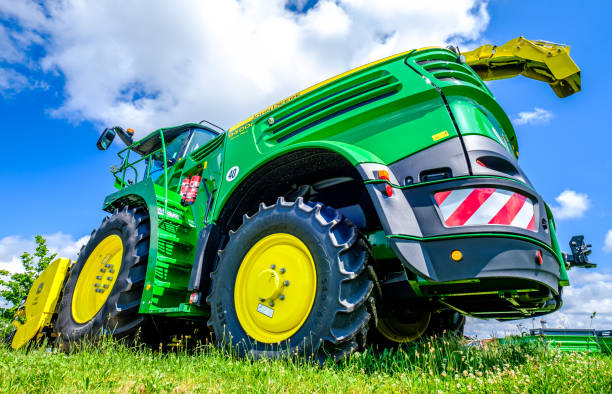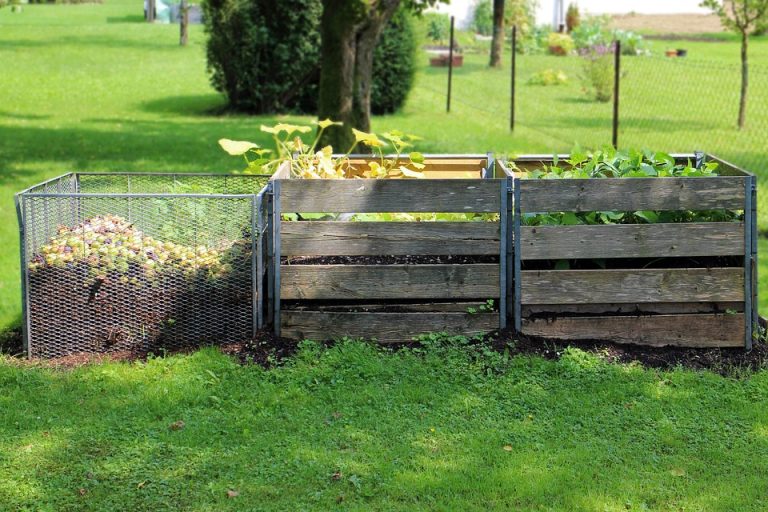KUBOTA L2501 PROBLEMS
In the world of farming and agriculture, where rugged reliability is the name of the game, the mere mention of “KUBOTA L2501 problems” can send a ripple of curiosity through the community. Like a legendary beast with its quirks and idiosyncrasies, the KUBOTA L2501 tractor has carved out its own unique reputation. Whether you’re a seasoned farmer, an equipment enthusiast, or simply someone intrigued by the fascinating world of machinery, delving into the challenges and triumphs of the KUBOTA L2501 promises a journey into the heart of agricultural innovation and the enduring quest for perfection in the field.
KUBOTA l2501 problems ?
“Many owners encounter common problems with this versatile tractor model. From hydraulic leaks and engine overheating to electrical glitches and transmission troubles, addressing these KUBOTA L2501 problems promptly is crucial.
Fortunately, routine maintenance and professional servicing can help prevent these issues and keep your L2501 running smoothly. Don’t let these common woes deter you from enjoying the exceptional power and performance this tractor offers. Explore our troubleshooting tips and solutions to keep your KUBOTA L2501 in peak condition.”
ENGINE TROUBLES
Engine troubles can be a frustrating issue for Kubota L2501 owners, but as mentioned, many of these problems can be prevented or resolved through proper maintenance and troubleshooting. Here are some additional details and tips for addressing engine-related problems in Kubota L2501 tractors:
STARTING ISSUES:
If your Kubota L2501 is having trouble starting, check the battery first. Ensure that the battery terminals are clean and secure, and the battery itself is in good condition.
Make sure the fuel shutoff valve is open.
Check the glow plugs if you’re experiencing cold-weather starting problems. Faulty glow plugs can make it difficult to start the engine in low temperatures.
POOR PERFORMANCE:
Poor performance can be caused by a variety of issues. Check the air filter to make sure it’s clean and not clogged. A dirty air filter can restrict airflow to the engine and reduce performance.
Ensure the fuel filter is not clogged. Regularly changing the fuel filter can prevent fuel flow problems that lead to poor engine performance.
Check the quality of the fuel you’re using. Contaminated or poor-quality fuel can lead to engine problems. Always use clean, high-quality diesel fuel.
Inspect the fuel lines and connections for leaks or blockages.
UNUSUAL NOISES:
Unusual noises can indicate engine problems. If you hear knocking, rattling, or other unusual sounds, it’s essential to investigate the source.
Listen for any exhaust leaks, loose bolts, or damaged components in the engine compartment.
Check the engine oil level and quality. Low or dirty oil can lead to engine noise and damage.
REGULAR MAINTENANCE:
Follow the manufacturer’s recommended maintenance schedule for your Kubota L2501. Regular maintenance, including oil changes, filter replacements, and fluid checks, can prevent many engine problems.
Keep the tractor clean and free of debris. Accumulated dirt and debris can lead to overheating and engine damage.
PROFESSIONAL INSPECTION:
If you’re unable to identify or resolve engine issues on your own, it’s advisable to consult a qualified Kubota technician. They can diagnose and repair more complex problems and ensure that your tractor is running optimally.
HYDRAULIC SYSTEM CHALLENGES
You’ve provided a good overview of some common challenges associated with hydraulic systems in tractors. Here are some additional details and insights on these challenges:
HYDRAULIC LEAKS:
Hydraulic leaks can occur for various reasons, including damaged hoses, worn seals, loose fittings, or corroded components. These leaks can lead to a loss of hydraulic fluid, which not only affects system performance but also poses an environmental hazard. Regularly inspecting hoses, fittings, and seals for signs of wear or damage and addressing any issues promptly is essential to prevent leaks.
SLOW LIFTING:
Slow or sluggish hydraulic lifting can result from several factors. Low hydraulic fluid levels are a common cause, as it reduces the system’s ability to generate pressure. Additionally, a clogged filter can restrict the flow of hydraulic fluid, leading to slow lifting. Regularly checking fluid levels and replacing filters as recommended by the manufacturer can help maintain proper lifting speed.
ERRATIC MOVEMENTS:
Erratic movements of attached implements can be frustrating and dangerous. These issues can stem from inconsistent pressure in the hydraulic system, which can result from air entering the system, worn-out components, or problems with the control valve. Proper bleeding of the hydraulic system to remove air, inspecting and replacing worn-out components, and checking the control valve for issues are steps to address erratic movements.
REGULAR MAINTENANCE:
Preventive maintenance is crucial to keep hydraulic systems in top working condition. This includes regular fluid checks and changes, filter replacements, and overall system inspections. Following the manufacturer’s maintenance schedule and guidelines is essential for ensuring the longevity and reliability of the hydraulic system.
HYDRAULIC FLUID QUALITY:
The type and quality of hydraulic fluid used in the system are critical. Using the wrong type of fluid or contaminated fluid can lead to performance issues and damage to components. Always use the hydraulic fluid specified by the tractor’s manufacturer and ensure it is clean and free from contaminants.
TEMPERATURE CONSIDERATIONS:
Hydraulic systems can be sensitive to temperature fluctuations. Extreme cold or heat can affect fluid viscosity and system performance. Some tractors are equipped with systems to address temperature-related issues, such as heaters or coolers for the hydraulic fluid. Ensuring the hydraulic system is well-suited for the operating conditions can help prevent temperature-related problems.
TRAINING AND USER KNOWLEDGE:
Proper training for tractor operators is essential. Users should be educated on how to operate the hydraulic system correctly, including understanding the control levers, pressure settings, and safety precautions. This can help prevent operator-induced issues.
TRANSMISSION AND GEARBOX CONCERNS
DIFFICULTY SHIFTING GEARS:
A common sign of transmission problems is difficulty in shifting gears. This can manifest as grinding noises, resistance when moving the gear lever, or gears slipping out of place. This issue can be caused by worn-out synchromesh gears, damaged shift forks, or problems with the clutch.
STAYING IN GEAR:
Conversely, a tractor may have trouble staying in gear. This means that even when you engage a specific gear, it may pop out of gear unexpectedly. This can also result from worn synchromesh gears, damaged gear teeth, or internal transmission damage.
WORN-OUT CLUTCHES:
Clutches are critical components in a tractor’s transmission system. Over time, the clutch plate can wear out, leading to slippage or difficulty engaging gears. Regularly inspecting and replacing worn clutches is essential to maintain smooth gear shifting.
GEAR LINKAGE PROBLEMS:
The gear linkage is the mechanical system that connects the gear lever to the transmission. If there are issues with the linkage, such as loose or damaged components, it can affect the tractor’s ability to shift gears accurately. Regular maintenance and adjustment of the gear linkage can help prevent problems.
LOW TRANSMISSION FLUID:
Low or contaminated transmission fluid can lead to various transmission issues, including overheating and reduced lubrication. It’s crucial to check the transmission fluid level regularly and change it according to the manufacturer’s recommendations.
PREVENTIVE MAINTENANCE:
To prevent major transmission problems, it’s essential to perform routine maintenance on your tractor. This includes regular inspections, fluid changes, and addressing any signs of wear or damage promptly. Following the manufacturer’s maintenance schedule is a good practice.
PROFESSIONAL INSPECTION:
If you encounter persistent issues with your tractor’s transmission, it’s advisable to seek the expertise of a qualified mechanic or technician. They can diagnose the problem accurately and perform the necessary repairs or replacements.
Proper care and maintenance of a tractor’s transmission and gearbox are crucial for ensuring its longevity and reliable performance. Neglecting these components can lead to costly repairs and downtime. Regular checks and prompt attention to any signs of trouble can help keep your tractor operating smoothly.
ELECTRICAL SYSTEM HICCUPS
Electrical system hiccups can indeed be a common issue in tractors and other vehicles. Here’s some additional information and tips to address these problems:
BATTERY MAINTENANCE:
The battery is a crucial component of the electrical system. Ensure that the battery terminals are clean and free of corrosion. Corroded terminals can cause poor electrical connections and reduce the battery’s effectiveness. Cleaning them with a wire brush and applying a terminal protector can help.
CHARGNG SYSTEM:
Problems with the alternator or charging system can lead to a dead battery and electrical issues. Regularly check the alternator and belt for signs of wear and ensure that the alternator is charging the battery correctly.
FUSES AND RELAYS:
Faulty lights and other electrical components may be due to blown fuses or malfunctioning relays. Check and replace any blown fuses and test or replace faulty relays as needed.
GROUNDING ISSUES:
Poor grounding can lead to various electrical problems. Make sure that all grounding points are clean and properly connected to the chassis.
STARTER MOTOR:
If the tractor’s starter motor is not working correctly, it may be due to a failing starter motor or solenoid. Testing these components and replacing them if necessary can resolve starting issues.
WIRING INSPECTIONS:
Over time, wiring can become damaged, leading to electrical problems. Regularly inspect the wiring harness for signs of wear, damage, or exposed wires. Replace or repair any damaged wiring.
VOLTAGE DROPS:
Perform voltage drop tests to identify areas where voltage is lost in the electrical system. High resistance in connections or wiring can lead to voltage drops, causing issues with various electrical components.
REGULAR MAINTENANCE:
Implement a regular maintenance schedule for your tractor’s electrical system. This includes cleaning connections, checking battery voltage, inspecting wiring, and ensuring all components are in good working order.
WEATHERPROOFING:
Tractors often operate in challenging environmental conditions. Make sure all electrical connections and components are properly weatherproofed to prevent moisture and corrosion issues.
PROFESSIONAL HELP:
If you’re not comfortable diagnosing or repairing electrical issues, don’t hesitate to seek professional help. Electrical problems can sometimes be complex, and a trained technician can identify and fix issues more efficiently.
By following these tips and performing regular inspections and maintenance, you can help prevent and mitigate electrical system hiccups in your tractor. This proactive approach will not only save you time and money but also ensure the safe and reliable operation of your equipment.
STEERING AND BRAKE ISSUES
Steering and brake issues are critical safety concerns for tractor operators. Here’s a bit more detail on these problems and how to address them:
WORN-OUT BRAKE PADS:
If your tractor’s brake pads are worn out, it can lead to decreased braking efficiency. You might notice longer stopping distances or even difficulty in stopping the tractor. Regularly inspect the brake pads and replace them when they are worn to ensure proper braking performance.
STEERING LINKAGE PROBLEMS:
Problems with the steering linkage can make it difficult to control the tractor, especially when turning. Loose or damaged steering components can result in erratic steering behavior. Regularly check the steering system for any signs of wear, loose connections, or damage, and address them promptly.
IMPROPER TIRE ALIGNMENT:
Incorrect tire alignment can lead to uneven tire wear and affect the tractor’s handling and stability. Ensure that your tractor’s tires are properly aligned according to the manufacturer’s specifications. Misaligned tires can also increase fuel consumption and reduce overall performance.
To maintain the safety and reliability of your tractor, it’s essential to perform routine maintenance checks:
REGULAR INSPECTIONS:
Conduct thorough visual inspections of your tractor’s brakes, steering components, and tires. Look for signs of wear, damage, or loose parts.
SCHEDULED MAINTENANCE:
Follow the manufacturer’s recommended maintenance schedule. This typically includes brake inspections and adjustments, steering system checks, and tire alignment.
BRAKE FLUID AND HYDRAULIC SYSTEM:
Check the brake fluid level and quality regularly. Ensure there are no leaks in the hydraulic system, as this can affect both steering and braking.
TIRE MAINTENANCE:
Inspect the tires for proper inflation, wear patterns, and any visible damage. Rotate the tires as recommended to ensure even wear.
ALIGNMENT CHECKS:
Periodically check the tire alignment, especially after hitting potholes or encountering rough terrain.
OPERATOR TRAINING:
Ensure that tractor operators are trained in safe driving techniques and understand how to respond in case of steering or brake issues.
EMERGENCY PROCEDURES:
Establish emergency procedures for dealing with sudden steering or brake failures. This may include knowing how to use the emergency brake, downshifting, and steering techniques to safely bring the tractor to a stop.
By regularly inspecting and maintaining the steering and braking systems of your tractor, you can significantly reduce the risk of accidents and ensure safe and efficient operation. Always prioritize safety when operating heavy machinery like tractors.
Here are some frequently asked questions (FAQ) about “KUBOTA L2501 problems”:
What are common issues with the Kubota L2501 tractor?
The Kubota L2501 is generally reliable, but some common problems include fuel system issues, hydraulic leaks, and electrical problems.
How can I troubleshoot a starting issue with my Kubota L2501?
Check the battery, starter, and electrical connections first. Ensure there’s fuel in the tank, and examine the fuel filters and lines for blockages.
Why is my Kubota L2501 overheating during operation?
Overheating can result from a clogged radiator, low coolant levels, a malfunctioning thermostat, or a faulty water pump.
What should I do if I notice excessive smoke from the exhaust of my L2501 tractor?
Excessive smoke can indicate issues with the fuel injection system, such as worn injectors, a dirty air filter, or incorrect fuel-to-air ratios.
How can I address hydraulic problems in my Kubota L2501, like slow or unresponsive hydraulics?
Check the hydraulic fluid level, inspect for leaks, and ensure the hydraulic filters are clean. Slow hydraulics might also be due to a worn hydraulic pump.
Why is my Kubota L2501 making unusual noises when in operation?
Unusual noises could be caused by loose or damaged belts, worn bearings, or issues with the transmission or engine. Diagnosing the exact problem is crucial.
How do I fix electrical issues like a dead battery or malfunctioning lights on my L2501 tractor?
Start by checking the battery, fuses, and wiring connections. Replace any damaged components or recharge the battery as needed.
What can I do if my Kubota L2501 experiences transmission problems or difficulty shifting gears?
Transmission issues may stem from low transmission fluid, worn clutch components, or a damaged gearbox. A professional mechanic should diagnose and repair these problems.
Is it normal for my Kubota L2501 to have trouble with cold starts in winter?
Cold starting issues are common in cold weather. Ensure you’re using the correct grade of engine oil and consider using a block heater for easier starts in cold conditions.
How can I prevent common problems with my Kubota L2501?
Regular maintenance, including fluid checks, filter changes, and inspections, can help prevent many common issues. Follow the manufacturer’s maintenance schedule and keep your tractor in good condition.
CONCLUSION
The Kubota L2501, like any piece of machinery, is not without its share of challenges and problems. However, it’s important to note that these issues are not insurmountable, and many of them can be addressed with proper maintenance, regular servicing, and responsible operation. Common problems reported by users may include minor electrical issues, hydraulic leaks, or occasional transmission problems.
Nevertheless, Kubota has a reputation for producing reliable and durable equipment, and with the right care and attention, the L2501 can continue to serve its owners well for years to come. As with any purchase, thorough research, routine maintenance, and a close relationship with a reputable dealer or service provider can go a long way in minimizing these problems and ensuring a positive ownership experience.
Common issues reported with the Kubota L2501, TYM tractor, and John Deere 1025R include minor hydraulic leaks and occasional electrical glitches, but overall, these tractors are known for their reliability and durability in the field.








